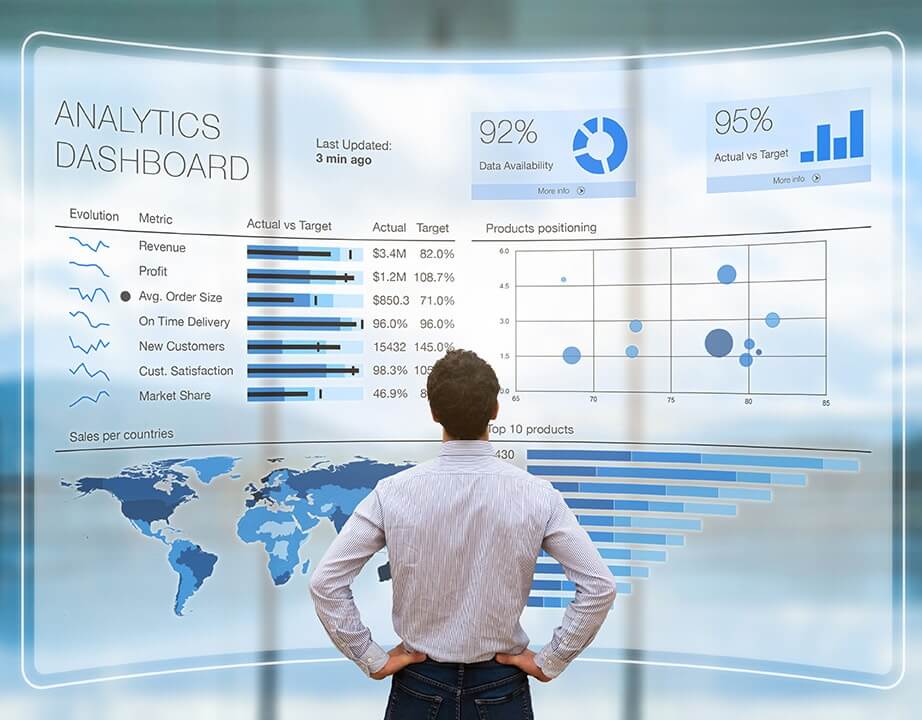Syncrasy in Insurance
Rapid digitization, changing customer expectations and shifting demographics are putting immense pressure on insurers. Explore why Syncrasy’s Acceleration Framework is essential to underpinning modern data driven initiatives.
Explore Syncrasy’s Acceleration Framework

Hover over the icons to visualize how Syncrasy can bring your next big idea to life.
The mega shifts in technology driving digitization, virtualization, mobilization, personalization, anticipation, augmentation and more, are changing the way customers think and how businesses need to change the way products and services are delivered.
Syncrasy’s Data Discovery Platform provides the foundation and solution building applications needed to keep pace with, and get ahead of the accelerating rate of business, social and economic transformational change.
Explore with us how Syncrasy technologies can help support your transformational change journey.
Designed for Agility, Performance & Scalability
Syncrasy’s Acceleration Core abstracts away the complications of building modern, data centric digital products and services, allowing enterprises of all sizes and sectors to affordably compete in this hyper-connected world.
Underpinning Syncrasy’s pre-engineered Software Feature Sets and Application Development Tools, Syncrasy’s partners with Amazon Web Services (AWS) to provide an Acceleration Core that is fault-tolerant, distributed and extensible by design, with modern, highly-available and load balanced resource scheduling and processing that is elastically scalable both at the application and compute resource deployment level.
AWS EC2 (Elastic Compute Cloud) - Secure and resizable compute capacity for virtually any workload
EC2 provides scalable virtual servers (instances) for running containers, databases, and application servers, forming the core compute layer in a cloud architecture with instance types, based on CPU, memory, storage, and networking requirements, being scalable to meet application demands.
Syncrasy’s Cloud Resources include a Kubernetes orchestration Framework with full-stack automated operations ensuring consistent operations, workload management, and enterprise-grade security from edge-2-cloud.
AWS ECS (Elastic Container Service)
AWS ECS (Elastic Container Service) manages and orchestrates Kubernetes clusters, helping to more efficiently deploy, manage, and scale containerized applications.
Deeply integrated with the AWS environment, ECS provides an easy-to-use solution for running container workloads in the cloud with advanced security features.
Syncrasy deployed cloud-native applications are self-healing with auto-placement, auto-restart, auto-replication and auto-scaling capabilities, ensuring enterprises can:
- Deploy applications quickly and predictably.
- Scale applications on the fly.
- Seamlessly roll out new features.
- Optimize use of hardware by using only the resources needed.
Underpinning Syncrasy’s PostgreSQL based Multi-tenant, multi-lingual applications, AWS Aurora Serverless v2 offers a highly scalable and serverless database solution that automatically adjusts capacity to match application demand. This ensures optimal performance and cost-efficiency, allowing businesses to focus on innovation without worrying about database management.
Aurora Serverless v2 automatically adjusts capacity based on application demand, eliminating the need to manage database instances manually.
Syncrasy leverages Amazon Virtual Private Cloud (Amazon VPC) to provide our customers with full control over their virtual networking environment, including resource placement, connectivity, and security.
Amazon Elastic Compute Cloud (EC2) and Amazon Relational Database Service (RDS) instances can be independently added to VPCs, with multiple VPCs and subnets within Regions if required, and the use both IPv4 and IPv6 for most resources in your VPC, helping to ensure secure and easy access to resources and applications.
VPC network configurations can be customized to create a public-facing subnets for web servers that have access to the internet, and to place backend systems, such as databases and application servers, in a private-facing subnet with no internet access.
Multiple layers of security are available, including security groups and network access control lists to help control access to Amazon EC2 instances in each subnet.
As new data requirements surface, solution providers need storage solutions that can quickly and affordably adapt. Syncrasy’s Cloud Object Storage underpinned by Amazon S3.
S3 is an object storage service offering high availability, scalability, and security. Used for storing and retrieving any amount of data at any time, S3 stores application data, backups, and logs. It serves as a storage backend for data generated by applications running on EC2, EKS, and other services.
Amazon S3 is the industry-leading solution for scalability, data availability, security, and performance, storing and protecting any amount of data for a range of use cases, such as data lakes, websites, cloud-native applications, backups, archive, machine learning, and analytics.
Running in On-Prem, Amazon Cloud, Hybrid Cloud and Multi-cloud environments, Syncrasy solutions are fully optimized for all infrastructures, significantly reducing deployment costs and maximizing the flexibility to start with a minimum investment and expand as you build progressive value.
Deployments can run anywhere, eradicating the complexities of migrating between different cloud providers, and everywhere, ensuring that sensitive data can be held on-premises whilst anonymized and less sensitive data can take advantage of flexible cloud infrastructures.
Amazon CloudWatch
To overcome the difficulties of managing multiple environments, Syncrasy leverages Amazon CloudWatch, a service that observes and monitor resources and applications on AWS, on premises, and on other clouds, responds to performance changes, optimizes resource use, and provides insights into operational health.
By collecting data across AWS and other resources, the CloudWatch service gives visibility into system-wide performance and allows users to set alarms, automatically react to changes, and gain a unified view of operational health.
Quickly, easily and reliably collecting, moving and exporting massive amounts of structured and unstructured data into and out of the Syncrasy Framework components.
Simplifies connections to:
- Enterprise Applications.
- Relational Databases, NoSQL Databases.
- Enterprise Data Warehouses.
- Transactional Text, CSV, Excel Data.
- Social Media Text, Audio, Video.
- Image, Geospatial and Video Motion Data.
- Machine Sensor and IoT Device Data.
Syncrasy provides the ability to curate, transform, enrich, store and analyze data in real-time, on-premises or in the cloud. and build parallel data pipelines using multiple pre-engineered technologies to fit the use case.
Equally well designed for small scale data sources that make up the Internet of Things as well as large scale enterprise integration, Syncrasy’s data flow technologies allow our solution development teams to respond quickly and easily to new information requirements and build digital business disruptors.
Where source data field contents are known to contain Personal Identifiable Information (PII) and other sensitive data, the data management functions can be used to hide or quarantine PII and other sensitive data at the point of data ingestion.
Syncrasy’s multitenant / multilingual database architecture, built on top of PostgreSQL, provides a cost-effective, scalable, and secure solution for modern web and cloud applications needing to serve a diverse set of tenants and users.
Providing robustness, data integrity, and reliability, Syncrasy’s database architecture incorporates a wide array of advanced features including:
- Internationalization and localization features including a multilingual data storage.
- Data isolation for tenants, ensuring security, privacy, and reducing the risk of data leakage between tenants.
- Scalability. As the number of tenants grows, the database can be scaled up or scaled out, crucial for applications expecting growth in the user base or data volume.
- Customizability per Tenant. Different schemas or configurations can be used to cater to the unique needs or preferences of each tenant, without affecting others.
- Easy Maintenance and Upgrades. System Administrators only need to update a single system, rather than managing updates for multiple databases for each tenant.
- Cost-Efficiency: By using a single database instance to serve multiple tenants, the cost of infrastructure and maintenance is significantly reduced.
Syncrasy’s multitenant / multilingual database architecture powers the creation global partner ecosystems that help to lower costs, reduced business risks and generate new marketing opportunities.
Syncrasy solutions deliver highly scalable and user friendly, self-service Multidimensional Online Analytical Processing (OLAP) and Full Text Search capabilities.
For dynamic real-time data update requirements, OLAP cubes are built on the fly and stored in memory, providing sub-second response times at volume and automatically reflect the current state of the underlying data.
Full Text Search capabilities include:
- Easy content discovery with lightning-fast responses.
- Smart matching and relevant results.
- Rich document parsing and geospatial search.
- Faceted search and filtering.
- Advanced text analysis & language detection.
As the benefits of Edge IoT materialize, including real-time data processing, reduced latency, improved reliability, reduced data transit costs, enhanced data security and privacy, so do the benefits of Edge AI (Artificial Intelligence).
AI systems are designed to simulate human intelligence by mimicking cognitive functions such as learning, problem-solving, perception, and understanding natural language.
By moving AI to the Edge, IoT is transformed from a simple data collection network into a distributed system of intelligent devices capable of sophisticated local data processing and autonomous operation, including:
- Real-time facial and object recognition.
- Enhanced predictive maintenance.
- Real-time alerts for abnormal readings.
- Localized behavior analysis.
- Autonomous navigation, obstacle avoidance, and decision-making without latency.
- Energy usage optimization.
- Real-time tracking with predictive outcomes.
Syncrasy solutions provides the capability to both:
- Seamlessly integrate enterprise data into 3rd party visualization and analysis tools.
- Build customizable and shareable dashboards and reports that address use case requirement needing an intuitive and collaborative way to view and analyse solution information.
These capabilities empower solution users to access, understand, and analyse data independently, without the constant need for IT or data teams' involvement and are critical for solutions that aim to be agile and data-driven in the fast-paced environment of today.
With Syncrasy's Pluggable Application Applets, solution providers can integrate Contactless, Handsfree and MIFARE applications within their devices, broadening functionality and widening the addressable market to include 750+ Cities that already use MIFARE applications such as contactless transit, micropayments, and access experiences for citizens.
Syncrasy’s device deployed MIFARE Applet, supported Syncrasy’s payments grade edge to cloud security opens the door to more than 40 different applications covering:
- Transportation.
- Access.
- Loyalty.
- Micropayments.
- Electronic Identity.
- Smart Media/Consumer Interaction.
- Gaming.
Event-driven Power Management is crucial for extending IoT device battery lives and is often deployed in remote or inaccessible locations where changing or recharging batteries can be challenging.
By optimizing power consumption and activating device functions only when necessary, event-driven power management helps ensure that IoT devices operate efficiently and maximize their battery life.
Key event-driven power management options for IoT devices include:
- Low-Power Modes.
- Wake-On-Event Mechanisms.
- Interrupt-Based Processing.
- Scheduled Reporting.
- Adaptive Sampling Rates.
- Dynamic Voltage and Frequency Scaling (DVFS).
- Firmware and Software Optimization.
- Energy-Harvesting Solutions.
- Battery Optimized Charging Cycles.
By implementing event-driven power management strategies, solution deployments can strike a balance between responsiveness and power efficiency.
Depending on solution requirements and budget constraints, Syncrasy provides a range of security deployment options including:
- Device Authentication: Use of strong, unique credentials for each device to prevent unauthorized access.
- Data Encryption: Encryption of data both in transit and at rest to protect sensitive information from being intercepted or accessed by unauthorized parties.
- Network Security: Secure networks with firewalls.
- Embedding of tamper-resistant hardware circuits (secure elements) in IoT devices, widely recognized as the strongest approach to creating a root of trust and safely store credentials. Each secure element acts as a vault and performs essential tasks, including cryptographic processing, generation of truly random numbers, and secure storage of authentication and attestation keys providing advanced security mechanisms that safeguard credential provisioning, device onboarding, and cloud connectivity.
Situation and Context Awareness integrates location-based data, real-time situational information, and contextual factors generated by add-in sensors to provide relevant insights and personalized responses.
Situational awareness focuses on understanding the immediate situation, while context awareness involves a broader understanding of the environment, including factors that may impact or provide additional insights into the situation. Both concepts are vital for making well-informed decisions and providing tailored services in various domains, including technology, safety, and human interactions.
Applications include collision avoidance in mines, construction sites & hospitals, first responder safety, personalized advertising and hospitality services.
Spatial Awareness & Precise Localization involves more advanced technologies and sensor fusion algorithms to achieve accurate and absolute positioning of objects in three-dimensional space. This approach is employed in applications where centimetre-level precision and accuracy are essential, such as robotics, precision agriculture, and “findmy” services.
Depending on the use case, devices may be equipped with a variety of technologies, including:
- GPS (Global Positioning System).
- Inertial Measurement Units (IMUs) that track movement and changes in orientation.
- Cameras: Visual data from cameras can be used for object recognition, feature extraction, and environmental mapping.
- LiDAR (Light Detection and Ranging) enabling the creation of detailed 3D maps of an environment.
- Ultrasonic sensors for obstacle detection.
Nearby Device Experiences provide interactions and functionalities that become possible when devices or applications can detect and communicate with nearby devices or objects.
Examples of nearby device experiences include:
- File Sharing and Content Transfer.
- Device Pairing and Setup.
- Printing and Scanning.
- Wireless Audio Sharing.
- Proximity-Based Authentication.
- Gaming and Entertainment.
- IoT Device Control.
- Indoor Navigation and Location-Based Services.
- Collaborative Work and Productivity.
- Health and Fitness Tracking.
Overall, nearby device experiences enhance convenience, efficiency, and interactivity in various aspects of daily life, making it easier for devices and users to seamlessly interact with their surroundings and with each other.
Nearby Positioning Services provide the relative position of devices or objects in close proximity to each other, suitable for indoor positioning, asset tracking, and location-based marketing applications.
Nearby Positioning Services provide a more generalized approach to location and is suitable for applications where high precision is not critical, and approximate relative positions are sufficient.
Combining multiple technologies for increased accuracy and robustness, Nearby Positioning Services have a wide range of applications from enhancing user experiences in retail environments to improving safety and efficiency in mining & industrial settings. They can also be integrated with GPS for seamless outdoor-to-indoor navigation transitions.
GUDIs are unique identifiers assigned to digital entities, typically associated with digital objects, data, or records, to ensure their distinct identification in a global context. GUDIs are used to avoid naming conflicts, facilitate data management, and enable efficient retrieval and tracking of digital assets across various systems, networks, and databases.
Key aspects of GUDIs include:
- Uniqueness, with no two digital entities sharing the same identifier.
- Structured Format to enhance their readability and manageability.
- Interoperability between different systems and databases.
- Metadata and Attributes that provide additional information about the digital entity.
GUDI’s also have a wide application range including:
- Digital Rights Management.
- Version Control.
- Data Tracking and Audit Trails.
- Security as part of access control systems.
Syncrasy provides integrated environmental sensor technology to economically deliver location-based air quality monitoring & reporting.
Sensors detect PM2.5 particulate matter concentrations, IAQ index constituents, barometric pressure, humidity and temperature.
Augmented by AI software, this technology is also trainable to detect Volatile Organic Compounds, Volatile Sulfur Compounds and other use case specific gases such as carbon monoxide and hydrogen, opening the door to wider use case deployments including:
- “Sick building” avoidance.
- Supply chain spoiled food detection.
- Gas & toxic chemical leakage detection.
- Early wild-fire detection.
- First responder protection.
- Hazardous environment reporting.
Syncrasy’s air quality monitoring technologies are Tiny, Noiseless, Fanless, Maintenance-free, Cloud Connected, and can be Solar Powered.
Pluggable Sensor Architecture accommodates external sensor add-ins for most use cases, with no or minimal modifications required to manage the different data types and volumes, cost-effectively broadening device functionality and marketability.
- Acoustic, sound, vibration.
- Chemical.
- Electric, magnetic, radio.
- Environment, weather, moisture, humidity.
- Flow, fluid velocity.
- Position, angle, distance, speed, acceleration.
- Optical, light, imaging.
- Pressure.
- Gases.
- Force, density, level.
- Thermal, heat, temperature.
- Proximity, presence and more.
Connect ANY external sensor communicating via UWB, BLE, or NFC and inherit MultiSense Chip to Cloud enhanced security.
Global insurance fraud approximates to $100 Billion a year.
Whilst insurers seek to prevent fraud by analyzing current and historic data, the evolution and complexity of fraud schemes has made existing methods of detection and prediction mechanisms based on subsets of data obsolete.
Syncrasy’s Data Discovery Platform supports a new generation of detection and prediction mechanisms by providing the data architecture and data processing capabilities to consolidate and correlate vast amounts of historical claims data with new data sources, including social media content, clickstreams, web log data and others for real-time detection of fraud and identification of fraudulent patterns.
Advancing regulation in the insurance industry now require insurers to hold capital in relation to their risk profiles in order to guarantee that they have enough financial resources to withstand financial difficulties.
Out of date ETL systems and legacy data warehouses however are hindering efforts by risk assessment teams to understand whether available data is current, accurate and comprehensive.
With Syncrasy’s Pluggable data curation, analysis, analytics and machine learning applications, insurers can build multiple data pipelines from the trusted “single source of truth” to:
- Improve the quality and accuracy of operational data.
- Satisfy regulatory and audit requirements.
- Use self-service analytics to improve risk assessments and profitability.
- Develop machine learning algorithms to cross correlate relationships and predict risk scenarios.
- Deliver timely reports to all information consumers.
Customers today expect more social and digital interaction and more individual attention, forcing insurers to rethink how insurance products are delivered.
Data driven innovations, such as usage-based insurance (UBI) programs as well as wearable fitness devices for heath insurance optimization are able to create new opportunities to either generate new revenues, provide better service, reduce operational costs or create market differentiation.
What insurance companies lack is a comprehensive 360º view of their customer and a Big Data IoT strategy. Syncrasy’s Big Data, IoT integration, data storage and analytics capabilities can cost-effectively underpin new, data driven, initiatives allowing insurers to continue to innovate, incentivize and retain customers.
In an increasingly customer-centric world, the ability to capture and use customer insights to shape products, solutions and improve the buying experience is critical.
But for most insurers building a comprehensive customer profile from isolated in data silos, application platforms and customer interaction points is often out of reach.
Syncrasy’s Data Discovery Platform overcomes these obstacles by providing the data architecture and data processing capabilities to consolidate and correlate vast amounts of customer operational data to unlock the patterns that help identify customer needs, learn from their behaviors and deliver personalized interactions.
Proprietary data warehouses, outdated ETL systems, customer demands for new interactive line of business applications, digital invaders and increasing regulation are threatening insurers’ ability to compete and survive.
But replacing these systems on mass would be a major undertaking, thwart with risk, business disruption and potential failure.
An alternative would be to leverage the modern IT architecture of Syncrasy’s Data Discovery Platform to underpin, utilize and extend existing resources and position the enterprise with the IT infrastructure needed to address new data driven initiatives and be future ready.
Specialized insurance company line of business applications underpin essential day to day operations but typically record data in proprietary and diverse databases making it difficult to cross correlate data.
Legacy DataMart's and ETL systems have helped to aggregate summarized data from multiple applications, but running on expensive proprietary storage platforms these systems are difficult to scale and don’t accommodate today’s types and volumes of data.
Syncrasy’s Data Discovery Platform overcomes these issues by providing the data architecture to quickly, easily and reliably collect, curate, transform, enrich and aggregate ANY data from ANY source.
With the ability to store more data for longer, within and across geographic boundaries, insurers can build true 365º enterprise intelligence.
The Challenge
The fight against insurance claims fraud, risk exposure reduction and the need to drive profitable growth through deeper customer insights and closer customer interactions are forcing insurers to rethink their data management strategy.
Traditional data silos frustrate efforts to get the right information at the right time, and the inability to blend and analyze all types of data from any source, in any amount and for any workloads poses a major threat.
Building modern data driven insurance solutions from scratch is NOT an option! Piecing together individual bits of proprietary and open source technologies is costly, time consuming and by the time you’ve finished requirements, data types and data volumes have changed; and architecting solutions built around a single database and data processing technology limits agility.
Syncrasy’s Acceleration Framework alleviates these pressures and provides insurers with the foundation to retain massive amounts of diverse data and deploy the extensible technologies needed to keep pace with, and get ahead of, the digital race.
The insurance industry foundation is based on measuring risk of events and controlling fraud. The access to massive enterprise datasets and the ability to analyze great volumes in real-time utilizing Big data technologies is redefining the industry’s foundation on data centricity.
Insurance fraud continues to rise
- UK – ABI estimates that insurance fraud costs 2.1 billion per annum.
- France – FFSA estimates that fraud accounts for 3.9 billion per annum and that instances of fraud have increased by over 16% year on year.
- South Africa – 1/3 of all insurance claims were considered fraudulent by the SAICB and cost the industry 15 billion rand (GBP 700 million).
- USA – CAIF report that Insurance fraud cost the industry over USD 80 billion each year.
- Spain – Insurers are reporting that whiplash claims are being pursued through the civil court rather than the usual criminal route. This utilizes private medical experts rather than court appointed advisors and has resulted in significant increases in both damages and fraud exposure.
Clyde & Co Global Fraud Survey

Whilst insurers seek to prevent fraud by analyzing current and historic data, the evolution and complexity of fraud schemes has made existing methods of detection and prediction mechanisms based on subsets of data obsolete.
Syncrasy’s Acceleration Framework supports a new generation of detection and prediction mechanisms by providing the data architecture and data processing capabilities to consolidate and correlate vast amounts of historical claims data with new data sources, including social media content, click streams, web log data and others for real-time detection of fraud and identification of fraudulent patterns.
Syncrasy’ integration of powerful machine learning, graph, statistics and analytics engines, built to take advantage of modern computing capabilities, substantially improve detection and prediction methods with advanced data science tools.
Risk management and regulatory compliance
Advancing regulation in the insurance industry including the Solvency 2 directive (amended by the Omnibus 2 directive), requiring European insurers and reinsurers from the 1st January 2016 to hold capital in relation to their risk profiles in order to guarantee that they have enough financial resources to withstand financial difficulties, is forcing insurance companies to reassess their data management strategies.
Deployment of multiple policy and product line of business systems, industry mergers, consolidations and acquisitions, out of date ETL systems and legacy data warehouses are all hindering efforts by risk assessment teams to understand whether available data is current, accurate and comprehensive. This lack of reliance on the data generates the potential for losses through miscalculation of risk and regulatory non-compliance through inaccurate capital allocations.

Using Syncrasy’s Acceleration Framework insurers can integrate and harmonize massive amounts of data from all data sources into an accurate and timely single source of truth. With all data consolidated into highly performant data structures, running on cost effective, infinitely and linearly scalable compute power and software defined storage systems, insurers can confidently manage and govern their data.
With Syncrasy’s Pluggable data curation, analysis, analytics and machine learning applications, insurers can build multiple data pipelines from the trusted “single source of truth” to:
- Improve the quality and accuracy of operational data.
- Satisfy regulatory and audit requirements.
- Use self-service analytics to improve risk assessments and profitability.
- Develop machine learning algorithms to cross correlate relationships and predict risk scenarios.
- Deliver timely tabular and graphical reports to all information consumers.
Enable new data-driven business models

Customers today expect more social and digital interaction and more individual attention, forcing insurers to rethink how insurance products are delivered.
Data driven innovations, such as usage-based insurance (UBI) programs including Pay-As-You-Drive (PAYD) and Pay-How-You-Drive (PHYD), as well as tracking wearable fitness devices for heath insurance optimization are able to create new opportunities to either generate new revenues, provide better service, reduce operational costs or create market differentiation.
What insurance companies lack is a comprehensive 360º view of their customer and a Big Data IoT strategy.
Many insurers find providing coverage to be cost-prohibitive and difficult to support due to operational and IT infrastructure constraints. Syncrasy’s Big Data, IoT integration, data storage and analytics capabilities can cost-effectively underpin these new, data driven, initiatives allowing insurers to continue to innovate, incentivize and retain customers.
However, whilst consumer IoT devices will proliferate in the future, millions of IoT devices are already deployed in a multitude of insurable industry sectors, including Aerospace, Chemicals, Pharmaceuticals, Energy, Petroleum, Agriculture and Manufacturing to name just a few. This market that is largely untapped by insurers from an IoT perspective, albeit that monitoring, analyzing and predicting risks from data supplied by industrial IoT devices offers the same opportunities to insurers as tracking consumer IoT devices, perhaps more.
Syncrasy’s Big Data and IoT integration, data storage and analytics capabilities can also be leveraged to create market differentiating insurance products to industries, potentially leading to spinoff IoT monitoring and alerting revenue generating services from the same infrastructure.
Driving profitable growth through deeper customer insights

In an increasingly customer-centric world, the ability to capture and use customer insights to shape products, solutions and improve the buying experience is critical.
But for most insurers building a comprehensive customer profile from isolated in data silos, application platforms and customer interaction points is often out of reach.
Few insurers can accurately correlate acquisition, cross-sell or upsell success with either their marketing campaigns or customer online browsing behavior.
Syncrasy’s Acceleration Framework overcomes these issues by providing the data architecture and data processing capabilities to consolidate and correlate vast amounts of customer operational data, call center interactions, emails, social media and website interactions to unlock the patterns that help identify customer needs, learn from their behaviors and deliver personalized interactions.
With the ability to store more data for longer and identify distinct phases in customers’ lifecycles coupled with predictive analytics capabilities, insurers can build true customer 360º intelligence to help acquire, grow and retain the customers.
Syncrasy enables organizations better understand their customers, learn from their behaviors and deliver personalized interactions.
Modernizing legacy systems
Proprietary data warehouses, outdated ETL systems, customer demands for new interactive line of business applications, digital invaders and increasing regulation are threatening insurers’ ability to compete and survive.
But replacing these systems on mass would be a major undertaking, thwart with risk, business disruption and potential failure.
An alternative would be to leverage in phases the modern IT architecture of Syncrasy’s Acceleration Framework to underpin, utilize and extend existing resources.

Syncrasy’s Acceleration Framework
Syncrasy’s Core with Run Anywhere Technology, fully optimized for bare metal, virtualized, cloud or hybrid infrastructures, significantly reduces deployment time and costs, whilst at the same time maximizing the flexibility to start with a minimum investment and expand as required. This fault-tolerant, distributed and extensible by design architecture with modern, highly-available and load balanced cluster and datacenter resource scheduling and processing, is elastically scalable both at the application and compute resource deployment level.
Syncrasy’s COTs based Software Defined Storage Solution provides a low cost, highly scalable option to store new data types and volumes, whilst at the same time allowing the re-utilization of existing legacy storage infrastructure.
Syncrasy’s Virtualization Technology provides a lightweight, low overhead, low cost alternative to full machine virtualization with high availability, live migration, automatic backup and restore for both modern cluster based applications as well as existing line of business applications running on legacy databases and operating systems.
Syncrasy’s Chameleon Technology, simplifies the plug-ability of modern, data centric applications and positions insurers with the IT infrastructure to address future ready, data driven initiatives.

The importance of a 365º Enterprise View

Specialized insurance company line of business applications (product, policy & agent management, billing and payments processing, CRM, ERP, HR and BI systems) underpin essential day to day operations, marketing and management processes.
However, line of business applications typically record data in proprietary and diverse databases making it difficult to cross correlate enterprise data.
Legacy DataMart's and ETL systems have helped to aggregate summarized data from multiple applications but running on expensive and proprietary storage platforms these systems required predesigned architectures and sizing, making them difficult to scale. Today’s volumes and types of data don’t fit well into these legacy architectures and constrict insurers’ capabilities to build rich and in-depth Enterprise Views.
Syncrasy’s Acceleration Framework overcomes these issues by providing the data architecture to quickly, easily and reliably collect, curate, transform, enrich and aggregate ANY data from ANY source, load the data into modern data architectures according to business needs and then analyze and visualize the cross enterprise data.
With the ability to store more data for longer, within and across geographic boundaries, insurers can build true 365º enterprise intelligence.
Syncrasy’s Digital
Acceleration Services
Underpinned by our Acceleration Framework, 360-degree digital skills and 20 years of successful innovation building, we bring fresh ideas, expertise and the technologies needed to solve your digital challenges, deliver early value and set a foundation for a digital future.
TELL US MORE
Someone will reach out to you to answer all your questions.
